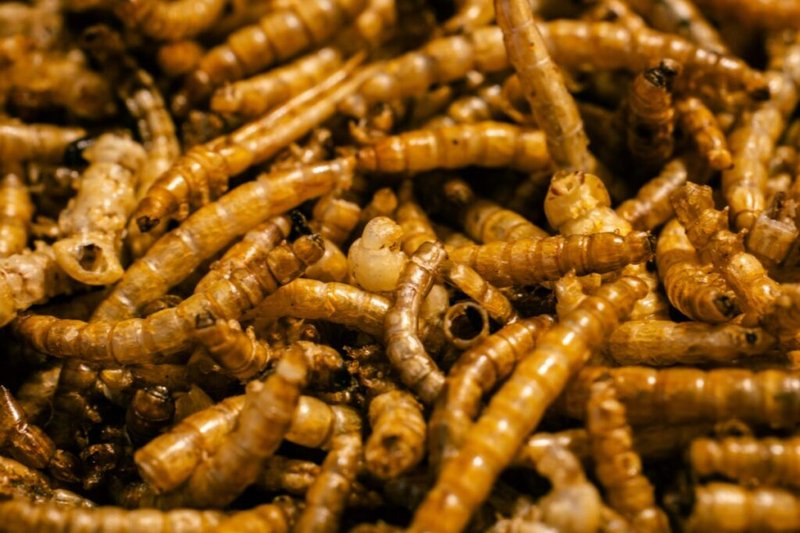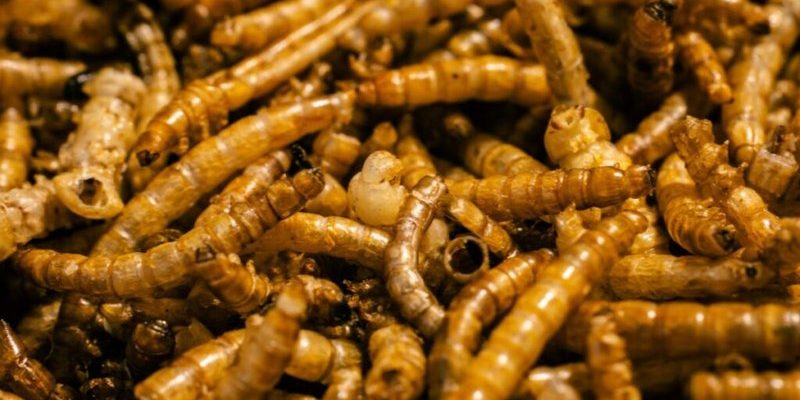
Mealworms are the larval stage of darkling beetles, primarily from the species *Tenebrio molitor*. They’re found almost everywhere and are particularly popular in bird feed and as a protein source for pets and livestock. But beyond their utility in human contexts, these little critters are vital for maintaining ecological balance. Let’s dig deeper into their ecological importance and why they should be celebrated more than they currently are.
Natural Decomposers and Nutrient Cycling
Mealworms are *natural decomposers*. What do I mean by that? Think about how much organic waste we produce daily: leftover fruits and vegetables, leaves, and even paper. Mealworms love to chow down on this stuff! They break it down through a process called decomposition. As they feed, they help turn this waste into nutrient-rich compost.
This compost is crucial for the environment. It enriches the soil, allowing plants to thrive. Healthy soil is the backbone of any ecosystem. Without decomposers like mealworms, we’d be buried under mountains of organic waste. Instead, they help recycle nutrients, which supports not only plant life but also the animals that depend on those plants for food. It’s like a cycle of life, and mealworms are right at the center of it.
Improving Soil Structure
Not only do mealworms break down waste, but they also improve soil structure. Their feeding activity creates small tunnels in the soil, allowing air and water to penetrate deeper. This is vital for root growth! Better aeration means roots can access more nutrients and moisture, which helps plants grow stronger and healthier.
Also, the excrement from mealworms, often called frass, enriches the soil even further. This frass is a natural fertilizer, packed with nutrients that plants love. So, when mealworms go about their daily munching, they’re not just cleaning up—they’re actively enhancing the soil’s quality. It’s a win-win for both the environment and the plants that inhabit it.
The Mealworm Food Web
Mealworms are an important link in the food web. They serve as a food source for many animals, including birds, small mammals, and even reptiles. If you’ve ever seen birds pecking around in the dirt, they might just be on the lookout for these tasty treats. This connection is vital for maintaining biodiversity.
When mealworms thrive, they help sustain populations of animals that depend on them. If their numbers were to dwindle, it could have a ripple effect, impacting the animals that rely on them for food. This demonstrates how interlinked species are—each one plays a role in the larger ecological picture.
Supporting Biodiversity
Biodiversity is crucial for a resilient ecosystem. Mealworms contribute to this by providing sustenance for various organisms. They are especially important in areas where other food sources might be scarce. For example, during certain seasons or in urban environments, mealworms can be a reliable food source, helping to stabilize animal populations.
Additionally, their presence signals a healthy environment. A thriving mealworm population typically indicates that the ecosystem is managing its waste well and that organic matter is being efficiently recycled. So, by supporting mealworms, we’re also supporting a range of species higher up the food chain.
Environmental Cleanup Crew
Think of mealworms as nature’s cleanup crew. They’re fantastic at munching on waste—whether it’s plant material or organic debris. In recent years, researchers have been looking into how mealworms can help manage waste from the food industry. You might be wondering, “How can little worms make a big impact?” Well, let me explain.
Studies have shown that mealworms can digest polystyrene, a common plastic found in food packaging. By transforming this waste into organic matter, mealworms can help mitigate plastic pollution. Instead of ending up in landfills, plastic might find a new purpose through these larvae! It’s pretty incredible to think that a creature so small can take on a problem as big as plastic waste.
Potential in Sustainable Farming
With the rising need for sustainable agricultural practices, mealworms present a promising solution. By incorporating mealworms into farming systems, we can create a closed loop where waste is reused, and soil health is enhanced. For instance, leftover produce from farms can be fed to mealworms, which, in turn, produce nutrient-rich frass that can be used to fertilize crops.
This approach not only reduces waste but also lowers the cost of inputs for farmers. Plus, a healthy ecosystem built around mealworms can lead to better crop yields. It’s a radical shift towards more sustainable practices that shows promise for the future of farming.
Innovation in Animal Feed
Another exciting aspect of mealworms is their potential in animal feed. With a growing global population, the demand for protein is skyrocketing. Mealworms are a fantastic source of protein, packed with essential amino acids. They’re already being used in feed for poultry, fish, and even pets.
Using mealworms as a protein source is not only efficient but also environmentally friendly. They require significantly less water and space compared to traditional livestock. Plus, they produce fewer greenhouse gas emissions! By investing in mealworm farming, we can help create a more sustainable food system.
Challenges in Mealworm Farming
Despite the benefits, mealworm farming isn’t without its challenges. There are hurdles like disease management, breeding, and scaling production to meet demand. However, ongoing research is addressing these issues, suggesting that mealworm farming could become a more viable industry as techniques improve.
Research into optimizing feeding regimens and understanding their nutritional needs might make this a more sustainable and efficient practice. With continued innovation, we can embrace mealworms as a key player in our sustainable future.
In conclusion, mealworms are more than just squiggly little creatures; they’re vital cogs in our ecological wheel. Whether they’re improving soil health, supporting local wildlife, or even tackling plastic waste, their ecological importance is undeniable. Honestly, the more we learn about mealworms, the more we see how they can contribute to a healthier planet.
By recognizing their role, we can foster initiatives that support mealworm populations and incorporate them into sustainable practices. If we treat these tiny allies with respect, they could help pave the way for a more sustainable future—one mealworm at a time. So next time you come across a mealworm, remember: they’re not just larvae; they’re ecological heroes in disguise!

